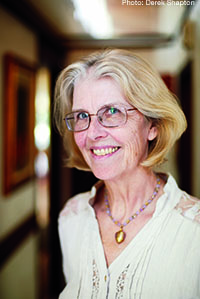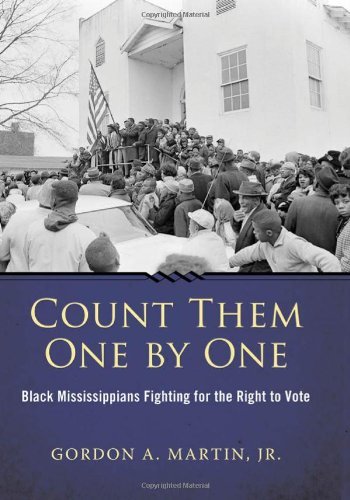In The Wake of History
In Golden Age, the culmination of Jane Smiley’s Last Hundred Years Trilogy, America’s past catches up to the present
In the final installment of her Last One Hundred Years trilogy, Jane Smiley advances the story of the Langdon family to the present day and beyond. The previous two volumes in the series, Some Luck and Early Warning, cover 1920-1986—from Woodrow Wilson to Ronald Reagan—as reflected through the lives of a single family originating in the farm region of Iowa. With Golden Age, Smiley takes readers through the heady ‘90s, the shaky aughts, and the present decade, finally offering a disturbing glimpse into the near future.
 This novel offers an epic scope but delivers its story in brief episodes, two-four pages each, snapshots of each year’s pivotal moments. The effect it achieves resembles time-lapse photography, the years passing too quickly to grasp the significance of changes that pull characters in their wakes. Only in retrospect can the Langdons make sense of the transformations they have undergone, usually when it’s too late to do anything about them—just as in real life.
This novel offers an epic scope but delivers its story in brief episodes, two-four pages each, snapshots of each year’s pivotal moments. The effect it achieves resembles time-lapse photography, the years passing too quickly to grasp the significance of changes that pull characters in their wakes. Only in retrospect can the Langdons make sense of the transformations they have undergone, usually when it’s too late to do anything about them—just as in real life.
Smiley intends her fictional family to represent America in microcosm, so she is obligated to spread its members outward from the Midwest into every region of the country and to take them on occasional trips abroad to provide the foreign vantage. By the time this volume picks up the lives of the Langdons, they have scattered far from their forebears’ plots near the fictional town of Denby, Iowa, which by the late-‘90s has suffered the fate of many farming communities, becoming “dark and abandoned.” The original Langdon farm, first tilled by Rosanna and Walter in the 1920s, survives into the present frame but may not withstand global climate change or other socioeconomic pressures bearing down. There is no end to the story, Smiley makes clear; there is only a stopping place.
Though Golden Age is too dispersed to have a conventional protagonist, two of Walter Langdon’s grandsons, twins Michael and Richie, occupy central positions in the novel’s quilt structure by virtue of their prominence in the high-visibility worlds of finance and government. They also represent divergent tracks in the political imagination: Michael, the wealthy money manager, grows increasingly conservative, demonizing the Clinton presidency and welcoming Bush’s war on terror; Richie, a moderately liberal Congressional representative from Brooklyn, anguishes over income disparity and the marginalization of immigrants. Their rivalry emerges in different guises over the decades, brought to the surface by crises both social and personal—Smiley’s shorthand for depicting the fault lines that continue to divide the nation’s populace.
 However far they roam from Iowa, the Langdons take the Midwest with them in their speech patterns and world view. Smiley, who lived in Iowa for more than two decades, conveys the region’s phlegmatic attitude toward fortune: no matter how bad one’s circumstances get, they can always get worse. One of the novel’s old guard, Andrea “Andy” Bergstrom, discovers one day that her sizable investment account, along with those of dozens of others, has been embezzled by a rogue trader, who absconds to Venezuela with a hundred million dollars. Andy takes it in stride; she merely re-calculates her monthly budget and goes about her business. In fact, she is relieved: “Andy took a deep breath and realized that she was happy now,” Smiley writes, “happy that the disaster had finally arrived and had turned out to be nothing but money.”
However far they roam from Iowa, the Langdons take the Midwest with them in their speech patterns and world view. Smiley, who lived in Iowa for more than two decades, conveys the region’s phlegmatic attitude toward fortune: no matter how bad one’s circumstances get, they can always get worse. One of the novel’s old guard, Andrea “Andy” Bergstrom, discovers one day that her sizable investment account, along with those of dozens of others, has been embezzled by a rogue trader, who absconds to Venezuela with a hundred million dollars. Andy takes it in stride; she merely re-calculates her monthly budget and goes about her business. In fact, she is relieved: “Andy took a deep breath and realized that she was happy now,” Smiley writes, “happy that the disaster had finally arrived and had turned out to be nothing but money.”
Golden Age falls into no readily identifiable patterns nor adheres to classical literary forms. The tragedies here arrive as they do in life, suddenly and without causal sequence—though not without ironic reversals. Frank, a World War II hero and successful private pilot, survives a rough landing in a private plane only to die minutes later when he is struck by lightning as he’s walking on the runway (to urinate in the bushes, of all things). Charlie, a fourth-generation Langdon, spends a lifetime exploring mountains and leading white-water rafting tours. Just as he discovers his vocation, as a search-and-rescue EMT, he becomes a victim of America’s most notorious act of terrorism. To live in Smiley’s world means that calamity lurks around every corner.
Plenty of humor and sensual delights balance the ledger, however. Smiley has always been a writer who excels at describing physical experiences like horse riding, skiing, and sex. Her characters are thoroughly embodied, their personalities drawn from their interactions with the material world. Janet, sister to Michael and Richie, gets pregnant for the second time at age forty and appreciates the sensation of the “active boy” in her belly, punching and kicking. “No one talked about this,” Janet thinks, “these most intimate communications from the child-to-be.” Despite the sprawl of characters and thirty-three-year time span, Smiley never loses sight of the personal details that give fiction its distinctive texture.
Readers not familiar with the previous two volumes can enjoy Golden Age on its own, though at the start of the novel an avalanche of names may overwhelm the uninitiated. When Claire walks into Andy’s Spartan home for the 1988 holidays, for example, she sees that her own “expertise” as a hostess was needed: “Arthur, Debbie, Hugh, Carlie, and Kevvie were expected, as well as Richie, Ivy, and Leo.” Smiley also can’t resist injecting the occasional anachronistic, I-told-you-so predictions into her historical re-enactments. To her credit, though, her research digs up testimony from public figures who really did see the writing on the wall regarding, for example, the fall of the Soviet Union or the financial crisis of 2007. These moments figure as minor details in the lives of her characters; as always with Smiley (to use the title of one of her recent novels), what is most important is the “private life,” the personal experience that is the purview of the novelist, not the historian.
Nearly twenty-five years after her Pulitzer Prize for A Thousand Acres, it is time for critics to reckon Smiley’s place in the canon of American letters. The Last Hundred Years trilogy is undoubtedly her most ambitious project, but other novels—notably 2007’s Ten Days in the Hills (her re-working of Boccaccio’s Decameron) and big-canvas masterpieces that explore the worlds of horse racing (Horse Heaven, 2000) and academia (Moo, 1995)—deserve consideration among the most accomplished novels of the last half-century. The publication of Some Luck, Early Warning, and Golden Age in quick succession has drawn well deserved attention to Smiley’s impressive back catalogue, but, judging from the energy and ambition of these new novels, she is nowhere close to calling it a career.

Sean Kinch grew up in Austin and attended Stanford University as an undergraduate. He later returned to Austin, where he earned a Ph.D. in modern fiction from the University of Texas. He lives with his family in Nashville.


